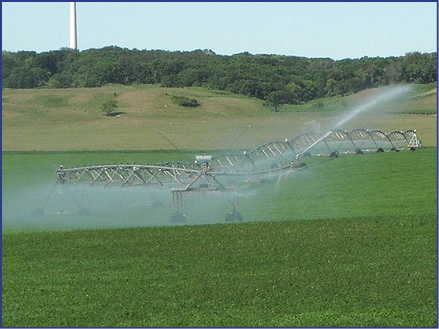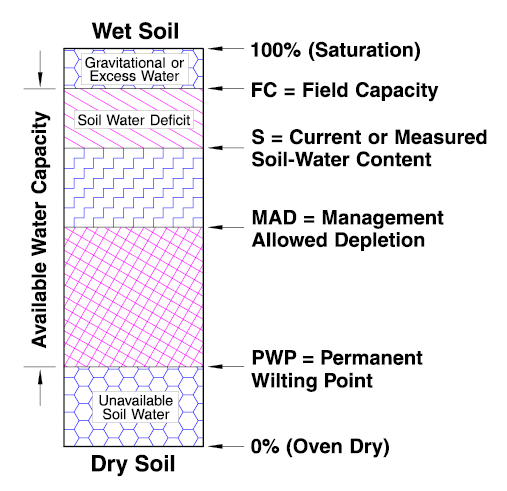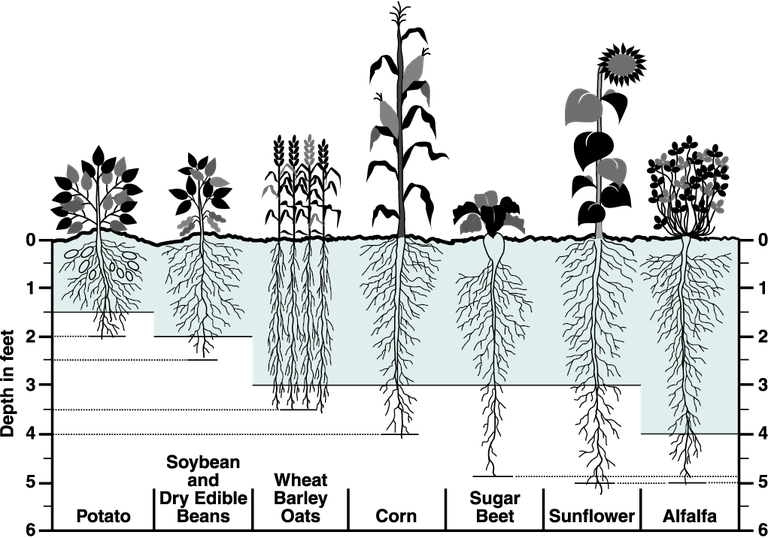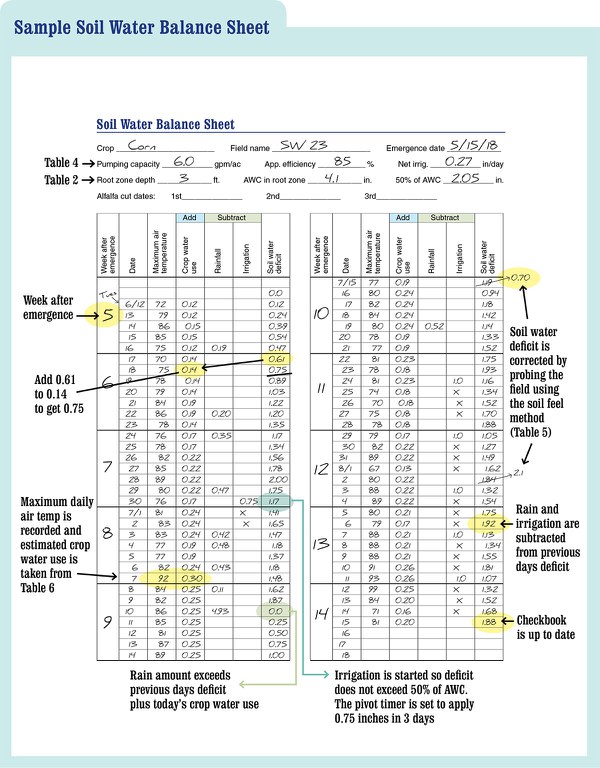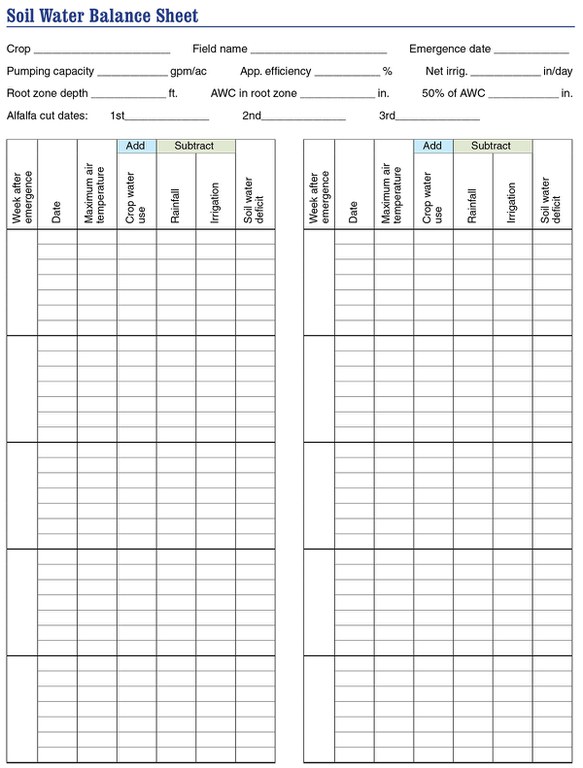(Adapted from American Society of Agricultural and Biological Engineers (ASABE) Standard S526.4, used with permission)
Available soil water, more commonly called available water capacity (AWC): The portion of soil water that plant roots of most crops can absorb readily; expressed in millimeters (mm) of water per mm of soil (inches per inch, inches per foot or total inches) for a specific soil depth. It is the amount of water stored in the soil between field capacity (FC) and permanent wilting point (WP). It typically is adjusted for salinity (electrical conductivity) and rock fragment content. In some texts it also is called available water-holding capacity (AWHC).
Crop evapotranspiration (ETc): The amount of water used by the crop in transpiration and building of plant tissue, and that evaporated from adjacent soil or was intercepted by plant foliage. It is expressed as depth in mm (inches, or as the volume-depth ratio of acre-inches per acre) and can refer to daily, peak, design, monthly or seasonal quantities. Sometimes referred to as consumptive use (CU).
Crop water use: Calculated or measured water used by plants; expressed in mm per day (inches per day). Same as ETc except it is expressed as daily use only.
Deficit irrigation: An irrigation water management alternative where the soil in the plant root zone is not refilled to field capacity in all or part of the field.
Field capacity (FC): Amount of water remaining in a soil when the downward water flow due to gravity becomes negligible. An estimate of field capacity ranges between soil water contents at matric potentials of minus 10 to minus 33 kilopascal (kPa) (minus 0.1 to minus 0.33 bar).
Irrigation scheduling: The process of determining when to irrigate and how much water to apply based upon measurements or estimates of soil moisture or water used by the plant.
Management-allowed depletion (MAD): The desired soil-water deficit at the time of irrigation.
Permanent wilting point (PWP): Soil water content below which plants cannot readily obtain water and permanently wilt. Sometimes called “permanent wilting percentage,” or WP. Often estimated as the water content corresponding to a matric potential of minus 1.5 megapascal (MPa) (minus 15 bar).
Soil-water deficit: Amount of water required to raise the soil-water content of the crop root zone to field capacity. It is measured in mm (inches) of water. Also called soil-water depletion.
Water application efficiency: Ratio of the average depth of water infiltrated and stored in the root zone to the average depth of water applied.
Water-holding capacity (WHC): Total amount of water held in a freely drained soil per increment of depth. It is the amount of water held between field capacity and the oven-dry moisture level; expressed in centimeters/centimeters (cm/cm) (inches/inch), centimeters/meter (cm/m) (inches/foot) or total centimeters (inches) for a specific soil depth. Sometimes called total water-holding capacity.
Adapted from Steele et.al. 2010, Applied Engineering in Agriculture with permission from ASABE
A system for scheduling irrigation using the “checkbook” method is outlined in this publication. It’s called the checkbook method because it operates just like a bank checking account. Rain and irrigation are deposits to the soil and the crop withdraws water from the root zone.
During the critical growth periods, the checkbook requires almost daily updates by the irrigator and, if used properly, it is a proven tool for irrigation scheduling.
